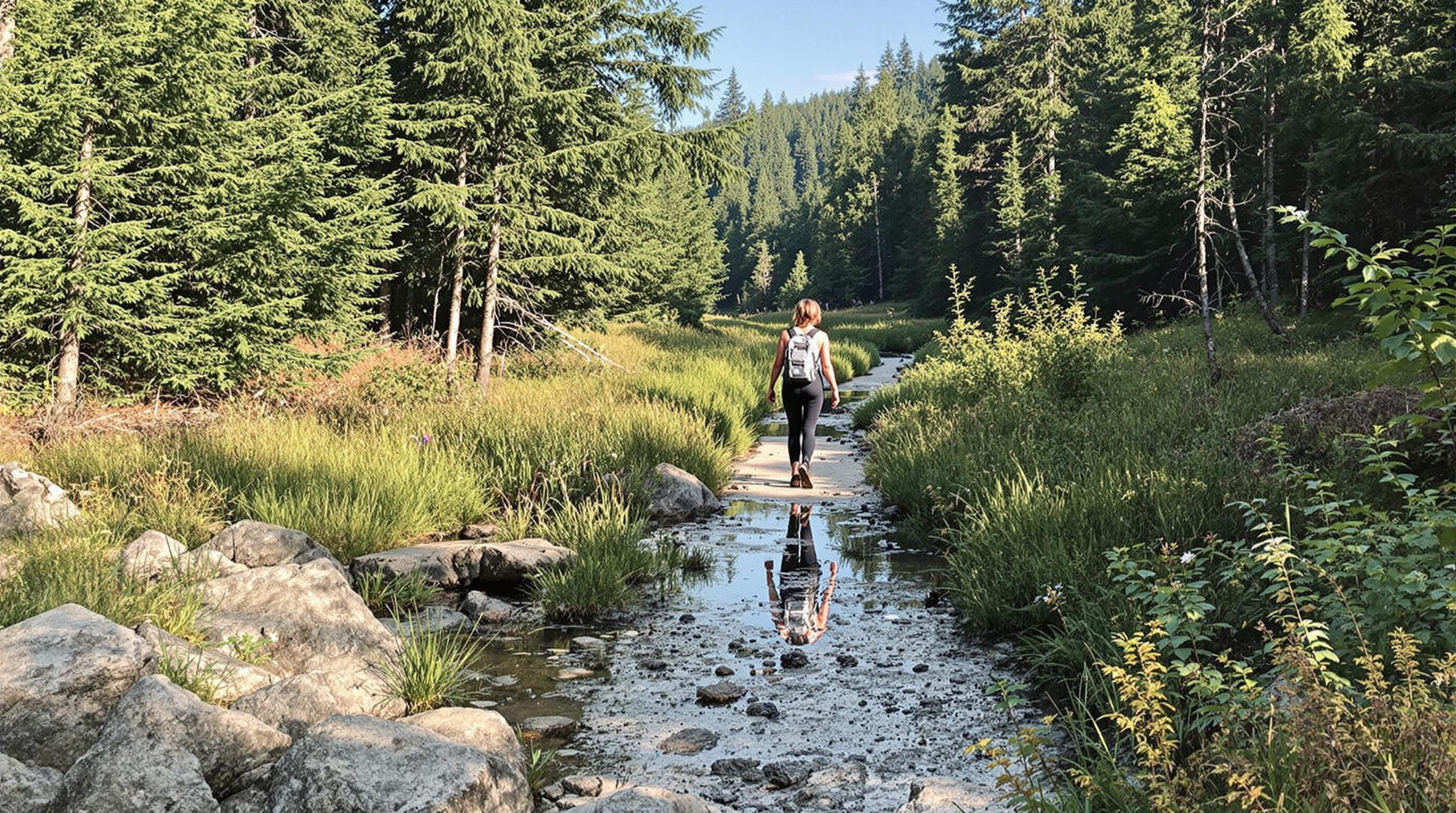Related Articles
- Uncharted Escapes: Navigating the Controversial Allure of Fringe Destinations and Their Untold Stories
- Uncharted Realms: The Surprising Intersection of Urban Legends and Adventure Travel in Offbeat Locations
- Curious Chronicles: Bizarre Transport Innovations Shaping Uncommon Explorations Across Unvisited Trails
- The Forgotten History of Eco-Adventuring: Learning from Indigenous Practices for Modern Exploration
- The Hidden Impact of Eco-Conscious Adventure Games on Environmental Education and Community Resilience
- Uncommon Routes: The Unexpected Appeal of Ghost Town Hikes in Eco-Friendly Exploration
Exploring the Uncharted: The Role of Gleaning in Sustainable Travel and Local Food Networks
Exploring the Uncharted: The Role of Gleaning in Sustainable Travel and Local Food Networks
In an age where sustainable practices are increasingly essential, gleaning serves as a crucial intersection of sustainable travel and local food networks. The practice not only minimizes waste but also fosters community bonds and promotes ethical consumption.
The Art of Gleaning: From Fields to Tables
Gleaning—often romanticized as an age-old practice—has roots that stretch back to biblical times. Traditionally, it involves collecting leftover crops from farmers' fields after they have been harvested. But in this modern era, gleaning has metamorphosed into a vibrant endeavor which not only supports sustainable travel but also revitalizes local food networks.
Why Gleaning Matters
In the United States alone, approximately 30-40% of the food supply is wasted annually, according to the USDA. This staggering statistic is where gleaning comes in as an eco-friendly solution, efficiently utilizing what would otherwise be discarded. Imagine a busload of travelers, bounty bags in hand, scavenging ripe tomatoes left behind to rot. Not only does this practice serve an environmental purpose, but it also connects visitors to the local culture in profound ways.
Real Stories from the Field
Consider the story of Melissa, a 27-year-old urban gardener from Seattle, on a spontaneous trip to Portland. While enjoying some local sights, she heard about a community gleaning event happening just outside the city. Not understanding what it was exactly, she hesitated at first. However, a friendly local explained how this event would help feed people in need. Intrigued, Melissa picked up her trowel and joined the teams of gleaners. By the end of the day, her car was filled with fresh produce destined for local food banks.
Traveling with Purpose
Traveling with a purpose is a trend that has been gaining momentum among the millennial and Gen Z generations. Instead of spending their vacation lounging on a beach resort, this demographic is increasingly keen on immersive experiences that allow them to contribute positively to the local communities they visit. Gleaning fits snugly into this ethos, providing travelers with hands-on opportunities to learn about agricultural practices while supporting food justice initiatives.
Case Studies: Global Gleaning Initiatives
Let's shift our gaze to France, where an innovative nonprofit called Graine de Partage (Seed of Sharing) organizes gleaning events across the country. They work with farmers to establish partnerships and create a system for gleaning that benefits everyone involved—farmers, gleaners, and local charities alike. In their first year alone, Graine de Partage gleaned over 75 tons of produce, feeding thousands of people in need. Their model showcases how gleaning can effectively merge local food initiatives with social impact.
In the UK, organizations like The Gleaning Network function similarly, partnering with farmers to collect surplus crops. Reports reveal that they have gathered over 1.5 million meals for communities across England. These case studies highlight that gleaning is not just a local or individual effort; it’s a movement that has the potential to systematically reduce food waste.
The Ripple Effect of Gleaning
The beauty of gleaning lies in its ability to create a ripple effect throughout the community. When travelers participate in gleaning activities, they often return home with new perspectives on food systems and seasons. One casual observer might leave the field with stories of interaction with farmers, personal connections to local charities, and an education on why it’s essential to support food networks. These stories, when shared socially or in person, propagate awareness and foster community spirit.
Get Your Hands Dirty: How to Glean Yourself
If you're feeling inspired and want to make a difference during your next travel adventure, why not participate in a local gleaning event? Many organizations provide opportunities for travelers to get involved in their gleaning programs. A quick search online will reveal options from Oregon’s Gleaning Brigade to Florida’s Fresh Stop Market.
Check local schedules, volunteer, and, before you know it, you’ll be elbow-deep in green beans instead of sand. What could be more rewarding than knowing you're making a tangible difference while experiencing the local culture? Grab a friend, lend a hand, and embrace the grime; your future self will thank you for leaving that beach chair behind!
Making Connections
One delightful aspect of gleaning that often gets overlooked is the social aspect. When you glean, you’re not just reclaiming produce; you’re also forming connections. Imagine calling your best friend to tell them about the charming farmer you met who offered not just a lesson on ripeness but also homemade jam. You get to witness firsthand the interconnectedness of your food journey, a shared experience that adds depth to your typical travel story.
Challenges: The Other Side of Gleaning
While gleaning is a wonderful initiative, it’s not without challenges. Farmers may hesitate to open their fields for various reasons—liability issues, lack of awareness of the practice, or sheer exhaustion from a long harvest season. This is where outreach becomes crucial. Organizations must work hand-in-hand with farmers to demonstrate the benefits that come from sharing their surplus. Greater support from local governments and agencies can also pave the way for more community-led gleaning initiatives.
The Future of Gleaning
As society continues to grapple with food waste and sustainability, gleaning presents an innovative solution. The continuation and expansion of gleaning initiatives can bring together travelers and local communities, fostering deeper connections and motivation for social responsibility. It’s an invitation for everyone—to go beyond their own needs and to help build a thriving community.
Sustainable Choices Beyond Gleaning
While gleaning is a pivotal aspect of sustainable travel and food networks, it shouldn’t stand alone. What about your accommodation choices? Many hotels are now engaging in sustainable practices by sourcing their food locally and reducing their own waste. For example, in Costa Rica, the Lapa Rios Lodge emphasizes the importance of supporting local farmers by serving only in-season, locally-sourced food. When travelers prioritize similar accommodations, they contribute to a larger circle of sustainability, which goes hand in hand with gleaning.
Surprising Benefits of Gleaning
The benefits of gleaning extend beyond environmental and social impacts. Interestingly, research suggests that participants often experience mental health benefits as well. Engaging in altruistic activities like gleaning can reduce stress and improve overall well-being. So, for those of you feeling overwhelmed by travel planning or needing a break from daily grind, what better way than to reap the harvest while fostering a sense of purpose?
Join the Movement
So, if you're passionate about helping the environment while traveling, consider becoming a gleaner. Your hands will be sore, your heart will be full, and you might just discover something marvelous about the bond between people and the land. With each bag filled, a little more waste is avoided, and a lot more community spirit is nurtured.
Final Thoughts
As we voyage into a future that increasingly demands sustainable choices, gleaning can be cast as a light on our path. Whether you’re young or young-at-heart, embarking on a journey to unearth the benefits of gleaning can provide not just a memorable experience, but fundamentally reshape how we relate to our food and one another. Let’s take a stand against food waste, embrace ethical consumption, and be part of a movement that stitches together the tapestry of communities worldwide.





